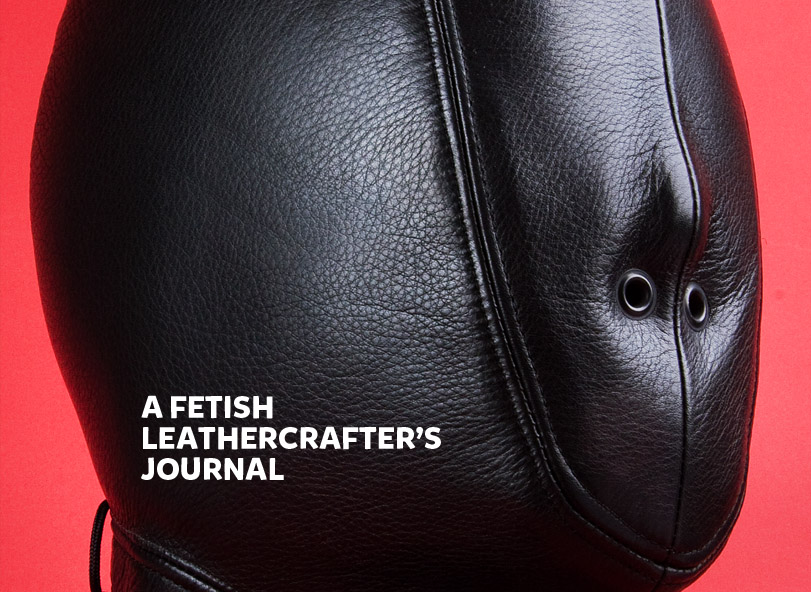 |
| The goal: "Perfection". Oh, that's all? |
I didn’t realize until I started making custom gear how much work was involved in achieving a “perfect” fit. (Or at least as close to perfect as I can possibly get...) As I have worked on a lot of project for different people, I’ve spent a lot of time thinking about it, and come to some conclusions…
The first might sound kind of obvious, but it’s huge: Every body is different.
 |
| We come in all shapes and sizes. Well, duh! |
Everyone has a very different body shape, with widely varying sizes and proportions. Just considering the head, the variations between the overall shape of the head and neck, the position of the features on the face, the shape and profile of the nose, chin, brow ridge, lips, ears - there’s a staggering amount of diversity in the shape and size of individual humans. When you are talking about the whole body, the distribution of weight, shape of the shoulders, chest, back, hips, buttocks, the length of the torso, size of the hands, arm-span, length of legs. There is an incredible range.
 |
| Recessed chins and pointy noses are just two of the countless points of differentiation. |
I know most clothing manufacturers use fit models who usually have “ideal” measurements. But how many people actually match these dimensions? There are probably very few who share that exact sizing. But I imagine all their clothes would fit wonderfully. At least all the ones made by that manufacturer using that model! How many women do you know that can always find jeans that fit? It’s an ongoing challenge for most. Based on the complexity of the shape (or should I say variety of shapes) of different women’s hip, thigh, buttock, waist area, I can appreciate the design challenge of making a perfectly fitted pair of jeans.
A typical “build-to-fit” process for me takes at least five sessions:
First session: Initial measurements and tape wraps
Have the model assume the desired position, and use plastic wrap and duct tape to create a form in the desired shape. The wrapped form is used to create a pattern, which is used to make a test-fit garment in fabric or vinyl. Ideally this test garment is made in a material that closely mimics the weight, thickness and stretchability of the final garment.
Challenges: This session is usually hot, stick and uncomfortable. Plastic wrap doesn’t breathe so your model can get sweaty, and the duct tape can be kind of smelly. You will get a workout pulling all that tape off of the roll. Plus it can easily take an hour or more to make a sleepsack wrap. It takes patience and time to go through this part of the process. Head wraps can be invaluable for making a fitted hood pattern, although these days I have master patterns that can be modified to fit most heads without going through that trouble.
Second session: try on prototype, make notes, measurements and edits to workpiece.
The first actual “try-it-on” fit session, the purpose is to try on the prototype and check for any problems. Is the fit close, but not too tight? Are the seams well placed? Do the openings end up where they belong? No bulges or bumps? Is it comfortable? Is there any part that could be let out or taken in? These questions are all considered, and if necessary a second prototype is made integrating the changes. Typically I use a centered zipper at the test phase, even if the final is going to be laced. The zipper is faster to put in, and will still give me the answer to the question of how the pattern pieces are fitting together.
Third session. Check edits or try on prototype #2.
Often when coming up with a completely new design, a 2nd prototype is necessary. This not only helps me zero in on the fit, but to try out different production techniques as well. Some elements might be tricky to sew, but after sewing something a few times, I start to come up with solutions along the way. I try to keep notes including “Next time” suggestions to myself for later reference. You get a lot of “eureka!” moments when making prototypes.
Fourth session: Try on actual garment. Check for fit, problem solve, trouble-shoot.
This is the true test of the final design in the final material. All the work from previous sessions and all the time spent in protoyping hopefully pays off at this stage with a beautifully-fitted garment. In the real world, sometimes this is where new problems arise that were not anticipated with the prototypes. Vinyl and fabric can be used to simulate leather, but sometimes the stretch is different, and something that fit perfectly in vinyl is now too tight in leather. Usually, the experience of wearing the leather version is far better for the model than the duct-tape of vinyl version (which may have been sticky, sweaty and smelly). Any necessary edits at this stage are painful, but more notes and additional edits are made to the pattern if necessary.
Fifth session: The final result.
We’ve gone though all this to get here: a model in a form-fitted restraint that fits every curve, is tight, but soft, comfortable yet confining. We have a pattern that works, with notes and production techniques that deliver consistent high-quality results. All of this work for a single restraint that fits a single unique individual, with every curve contour and shape beautifully enclosed. Job well done. And on to the next project!

































































